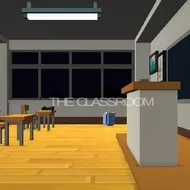

The Classroom centers around observation, timing, and social awareness within an unpredictable environment. Players take on the role of a student attempting to navigate daily challenges inside a strict academic setting. Success depends not only on quick reactions but also on understanding patterns, managing distractions, and completing tasks unnoticed. Each level mirrors the controlled tension of real-life classroom experiences, where every decision may draw unwanted attention or reward careful strategy.
The gameplay structure in The Classroom revolves around balancing stealth and focus. The main objective is to complete assigned activities while avoiding detection by authority figures or peers. Levels progress from simple coordination exercises to complex puzzles requiring multitasking under pressure. Timing becomes critical as players must anticipate movement patterns and exploit brief opportunities.
This rhythm of observation and action produces an immersive loop that encourages methodical planning. Mistakes often lead to humorous or tense outcomes, reinforcing the importance of precision over speed.
The Classroom builds its difficulty gradually through varied room configurations and interactive elements. Each stage introduces new mechanics or environmental restrictions that test adaptability. Some challenges rely on memory, while others focus on resource allocation or spatial reasoning. Environmental cues—like changing soundscapes or lighting shifts—signal upcoming dangers or opportunities.
Players who remain attentive can exploit these elements to maintain control. The game rewards consistency and patience rather than impulsive movement, turning everyday settings into strategic battlegrounds of awareness and quick judgment.
Behind its simple presentation, The Classroom integrates multiple overlapping mechanics that encourage creative problem-solving. Small variations in timing, object placement, or behavioral patterns significantly influence outcomes. Observing reactions, rather than forcing progress, becomes the most reliable method for advancement.
Through this approach, players internalize both spatial awareness and behavioral analysis. The more one observes, the more efficient future movements become, mirroring the process of adapting to structured environments in real life.
The Classroom transforms a familiar setting into a dynamic space of strategy and observation. Its design highlights the tension between order and rebellion, precision and curiosity. By demanding both awareness and control, the game challenges players to think before acting, learning to balance immediate goals with long-term understanding. Each completed level feels earned through analysis and adaptation, making The Classroom an engaging study in quiet competition and personal discipline.